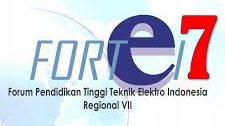Eksperimen Heat Transfer pada Minichannel Baterai Pesawat Listrik dengan Fluida Etilen Glikol-Air
Heat Transfer Experiments on Electric Aircraft Battery Minichannels with Ethylene Glycol-Air Fluid
Abstract
The aviation industry has changed the mass and private transportation industry, thus making aircraft more and more varied, this type of air transportation has a very high adverse effect on the atmosphere because of its very high fuel consumption and emitting so many pollutants that aircraft for the future will lead to There are 2 types of aircraft, namely Hybrid-Electric Aircraft and All-Electric Aircraft. Both have the same electric power drive, but there are weaknesses in this transportation. Namely on the battery used. The method used is the experimental method. While this type of research uses an electric aircraft battery prototype where the temperature of the working fluid will be measured with a thermocouple 1 (T1) and flowed by a pump from tank 1 to the minichannel in the battery pack. For the battery, the temperature will be measured by thermocouple 2 (T2), thermocouple 3 (T3), and thermocouple 4 (T4) then the working fluid from the minichannel will be flowed into tank 2 where the temperature will be measured using thermocouple 5 (T5). The results obtained in this study are the use of working fluid 75% Ethylene Glycol – 25% Water is better than 75% Water – 25% Ethylene Glycol in terms of pressure drop, temperature value, and heat transfer convection itself. Meanwhile, for the working fluid flow velocity and Reynolds Number, the working fluid is 75% Ethylene Glycol – 25% Water better than 75% Water – 25% Ethylene Glycol.







1.png)







